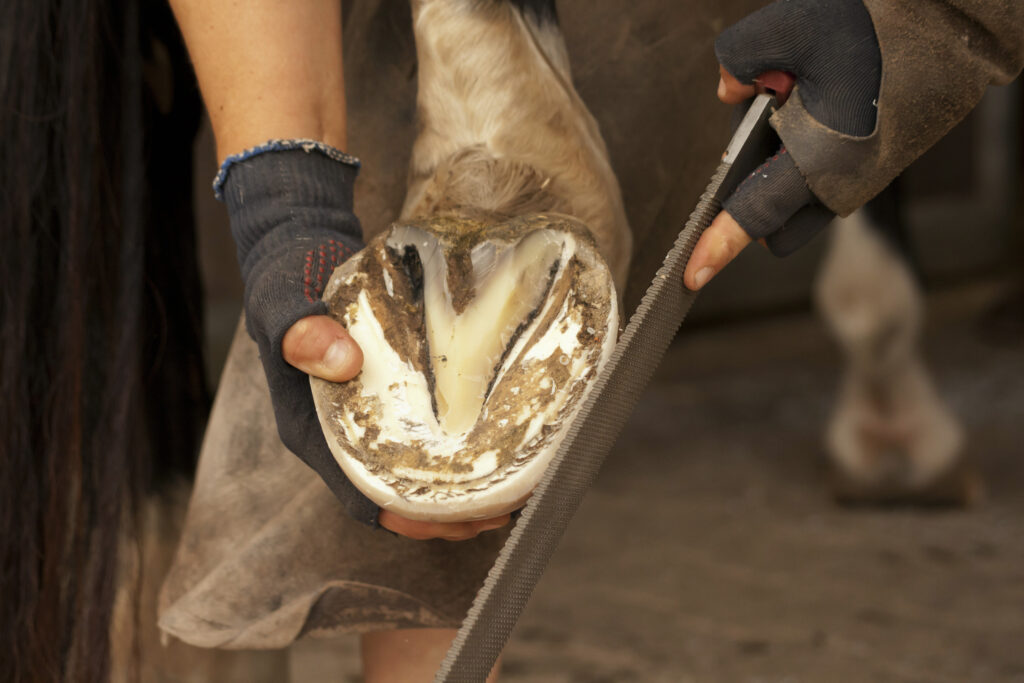
At the 2023 AAEP Convention, Steve O’Grady, DVM, MRCVS, of Virginia Therapeutic Farriery, discussed the value of removing a horses’ shoes in appropriate situations. He stressed the need for an adequate transition period that allows all foot structures to share load bearing compared to the primarily peripheral loading of the hoof wall experienced with shoes. The transition period might take 30-60 days, depending on hoof structure quality at the onset of being barefoot. He said transitioning horses can be walked for seven to 14 days on firm footing under saddle and turned out in a small area for two to three weeks.
Barefoot Trimming Best Practices
Farriers should perform hoof care on these horses at two- to four-week intervals. O’Grady said it’s important for the philosophy of farriery to change. Instead of trimming the hoof to a horizontal, flat plane, farriers should shape barefoot hooves with a wire brush to remove debris and then use a rasp set at an angle. He said farriers can set hoof knives aside and use hoof nippers very judiciously if they need to remove small areas of excess, mostly at the toe. They should trim heels to the same horizontal plane as the frog and rasp or trim the border of the hoof wall on a 45-degree angle right in front of the white line. In contrast, trimming a hoof to be flat and horizontal removes the bulk and depth of the sole. Farriers should remove sharp edges with a file in a rounding motion against the outer hoof wall surface to create a bevel. O’Grady noted that a sole cup promotes a nice border around the hoof wall and provides traction.
Upper-Level Barefoot Horses
He reported on an ongoing study at the Swedish University of Agricultural Sciences (Dr. Staffan Lidbeck) evaluating data on jumping horses with and without shoes. The horses did not undergo an adaptation period when their shoes were pulled at the end of the shoeing cycle. Sensors on legs and feet revealed shoes restrict the hoof mechanism of expansion and contraction compared to barefoot. When the horse works in a circle, the heels’ vertical movement is restricted in shod horses, whereas each heel moves separately in an upward and downward direction in barefoot horses. Two-thirds of the Swedish show jumping team competed successfully without horseshoes at the Tokyo Olympic Games.
O’Grady noted the following observations based on approximately 60 upper-level horses competing barefoot:
- They have minimal lameness issues.
- The hoof wall becomes harder and thicker.
- Urine and moisture aren’t retained beneath a shoe.
- A natural sole callus forms at the toe along with a stronger hoof wall-bar junction.
- The frog broadens and thickens.
- The foot develops more depth (cup).
- The whole barefoot hoof wears from friction, rather than just the heels in shoes.
Final Thoughts
With today’s synthetic and deformable footing at shows and on farms, O’Grady suggested many horses with good and/or improvable foot structures can live and compete barefoot.
Sponsored by









